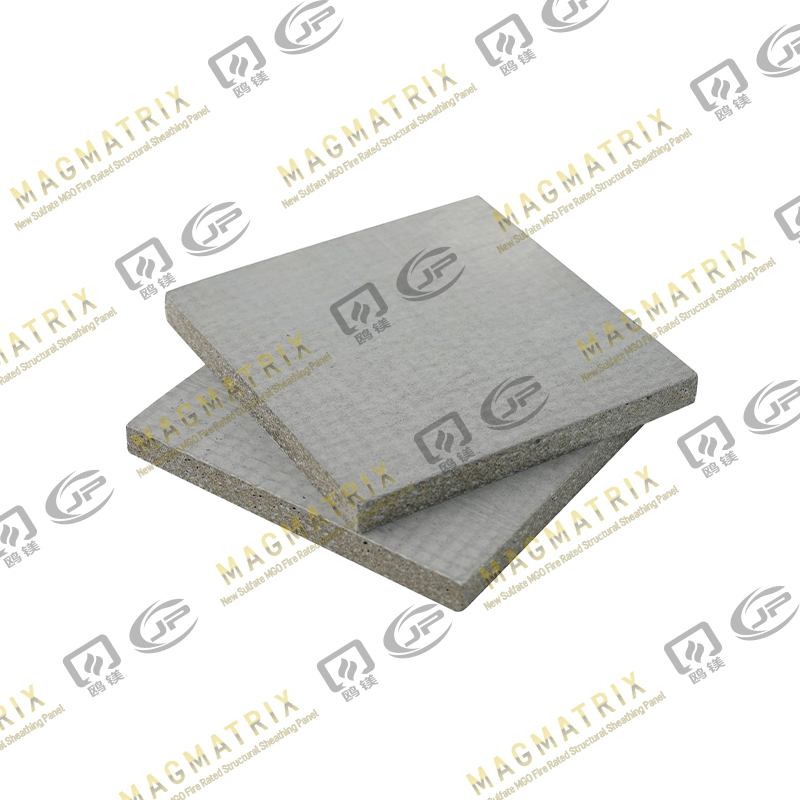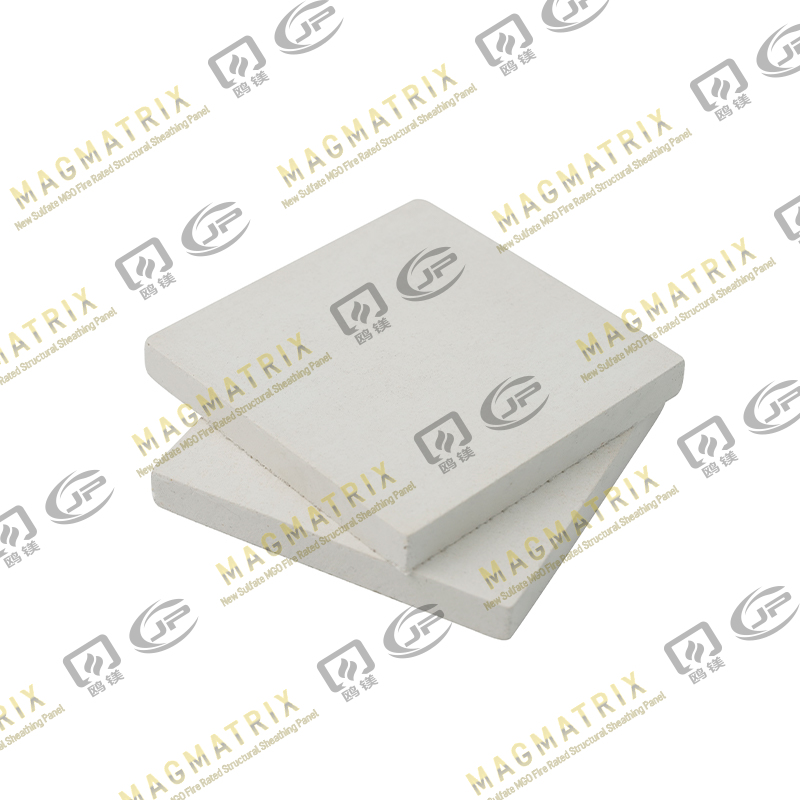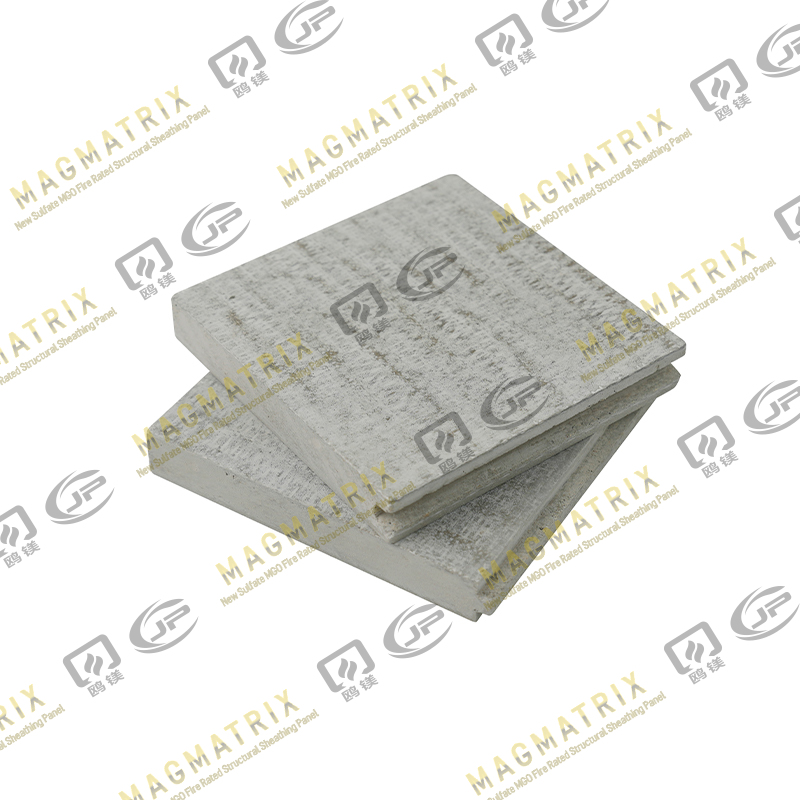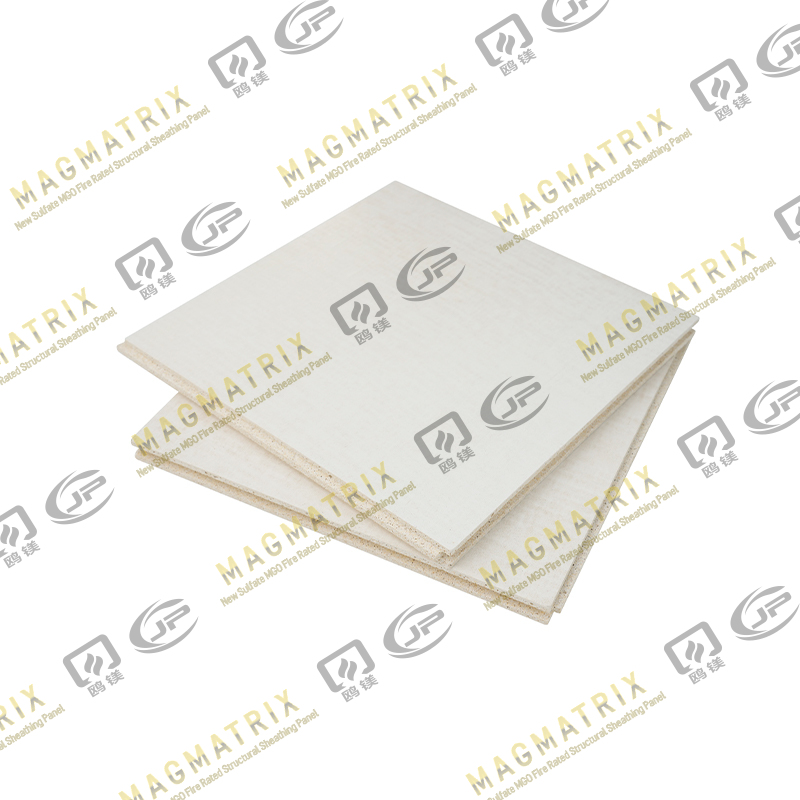Indoor air quality has become a major concern for homeowners, builders, and environmental health professionals alike. As people spend most of their lives indoors, the materials used in construction and finishing can directly influence the air we breathe. Among these materials, MgO Underlayment Board—a magnesium oxide-based construction panel—has gained attention for its durability, fire resistance, and eco-friendly properties. But an essential question remains: Is MgO Underlayment Board safe for indoor air quality?
1. Understanding MgO Underlayment Board
What is MgO Underlayment Board?
MgO Underlayment Board (short for Magnesium Oxide Underlayment Board) is a type of cementitious building panel used beneath flooring systems or as a substrate layer. It is made primarily from magnesium oxide (MgO), magnesium chloride (MgCl₂) or magnesium sulfate (MgSO₄), perlite, wood fibers, and other natural additives.
Unlike conventional cement boards or gypsum-based materials, MgO boards are non-toxic, fire-resistant, and resistant to mold and mildew. Because of these properties, MgO boards are increasingly used in both residential and commercial buildings, particularly in applications that require fire-rated or moisture-tolerant flooring systems.
Why indoor air quality matters
Indoor air quality (IAQ) refers to the cleanliness and chemical composition of the air inside buildings. Poor IAQ can arise from volatile organic compounds (VOCs), formaldehyde, mold spores, and other pollutants released by building materials or trapped due to inadequate ventilation.
The ideal underlayment material should not emit harmful gases, support mold growth, or react with other substances to release toxins. MgO Underlayment Board claims to meet these criteria—but does it really?
2. Composition and Its Relevance to Air Quality
The air quality impact of any building material largely depends on what it’s made of. Let’s look at how MgO board components behave in indoor environments.
Magnesium Oxide (MgO)
Magnesium oxide is an inorganic compound derived from magnesium carbonate or magnesium hydroxide through calcination at high temperatures. It’s chemically stable, non-flammable, and non-reactive in normal indoor conditions. Importantly, it does not emit VOCs or formaldehyde.
When used in MgO boards, it contributes to fire resistance and dimensional stability—both essential for healthy and safe interior spaces.
Binders (Magnesium Chloride or Magnesium Sulfate)
Early formulations of MgO boards used magnesium chloride (MgCl₂) as a binder, but some products today use magnesium sulfate (MgSO₄) instead. Both compounds are inorganic and generally safe for indoor use.
However, magnesium chloride can absorb moisture under high-humidity conditions, which might lead to minor surface dampness or, in extreme cases, corrosion of embedded metal fasteners. Modern manufacturing controls and coatings usually mitigate this issue.
From an air quality standpoint, these binders do not produce harmful off-gassing—a significant advantage over resin-bonded materials such as plywood or MDF, which often release formaldehyde and other VOCs.
Additives and Fillers
Some MgO boards include natural fillers like perlite, vermiculite, or wood fibers to improve strength and reduce density. When properly encapsulated within the board matrix, these materials remain inert and safe. Manufacturers typically avoid chemical additives that could compromise air quality.
3. Comparison with Conventional Subfloor and Underlayment Materials
To understand MgO’s safety advantages, it helps to compare it with other common underlayment materials.
| Material Type |
Potential Air Quality Concern |
Emission Characteristics |
| Plywood / OSB |
Uses urea-formaldehyde resins; may off-gas for years |
Medium to high VOC and formaldehyde emissions |
| Gypsum board |
Generally low emissions but may contain additives or paper that harbor mold |
Low VOCs; potential mold issues |
| Fiber cement board |
Contains Portland cement and silica dust; emissions minimal after installation |
Low VOCs but silica risk during cutting |
| MgO Underlayment Board |
Inorganic and non-combustible; minimal emission sources |
Near-zero VOCs and formaldehyde-free |
This comparison shows that MgO Underlayment Board performs strongly in indoor air quality safety when compared to conventional materials.
4. Off-Gassing and VOC Emissions
A key indicator of indoor air safety is the amount of volatile organic compounds (VOCs) released by materials. VOCs can cause headaches, respiratory irritation, or long-term health risks depending on exposure levels.
Extensive laboratory testing has shown that MgO Underlayment Boards emit negligible VOCs. This is because the product’s mineral composition does not rely on synthetic adhesives or solvents. Most boards are labeled as “formaldehyde-free”, “asbestos-free”, and “silica-safe”, depending on the manufacturer.
Several independent tests have verified that MgO boards can meet or exceed indoor air quality standards such as:
- GREENGUARD Gold Certification
- LEED v4 Low-Emitting Materials Credits
- CARB Phase 2 (California Air Resources Board) Formaldehyde Emission Standards
- European E1 or E0 Formaldehyde Standards
These certifications demonstrate compliance with the strictest thresholds for chemical emissions, further confirming MgO’s suitability for indoor environments.

5. Mold and Mildew Resistance
One of the indirect threats to indoor air quality is mold growth. Mold releases spores and mycotoxins that can severely impact health, especially for people with allergies or respiratory conditions.
MgO Underlayment Board naturally resists mold and mildew growth because of its alkaline pH (typically above 10) and inorganic composition. Mold cannot use MgO as a nutrient source, unlike organic materials such as wood or paper-faced gypsum.
In high-humidity regions or spaces like bathrooms, basements, or kitchens, MgO underlayment can therefore serve as an effective layer of protection against microbial contamination.
6. Fire Safety and Indoor Toxins
When building materials burn, they often release toxic gases such as carbon monoxide, hydrogen cyanide, or dioxins. Fortunately, MgO Underlayment Board is non-combustible and classified under Class A fire ratings (ASTM E84).
In the event of a fire, MgO boards do not contribute to smoke density or toxic fume release. This characteristic is particularly valuable for enclosed spaces where smoke inhalation can be more dangerous than flames themselves.
7. Handling and Installation Considerations
While MgO Underlayment Board is safe once installed, proper handling during construction is still important for maintaining indoor air quality and worker safety.
Dust Generation
Cutting MgO boards can produce fine mineral dust. Although it’s not silica-based (which is highly hazardous), it’s still recommended to:
- Use dust extraction systems during cutting,
- Wear masks or respirators,
- Ventilate the work area adequately.
Once installed and sealed, the board no longer generates airborne particles.
Moisture Management
If exposed to prolonged moisture without proper sealing, some MgO boards (particularly chloride-bonded types) can attract salt efflorescence. While this does not produce airborne toxins, it can lead to minor aesthetic issues or corrosion of nearby metal components. To prevent this:
- Use magnesium sulfate-based boards where possible, or
- Apply protective coatings and sealants during installation.
8. Real-World Performance and Long-Term Safety
The performance of MgO Underlayment Board in indoor environments has been evaluated in both laboratory settings and real-world applications. Long-term monitoring in residential, office, and institutional buildings has found no measurable impact on indoor air pollutants associated with MgO-based materials.
In addition, since MgO is chemically inert and does not degrade under normal indoor temperatures or humidity levels, it maintains stability over decades of use. This makes it not only a safe choice for IAQ but also a low-maintenance, long-lasting substrate for flooring and interior systems.
9. Environmental and Health Certifications
To further ensure product safety, many manufacturers submit MgO Underlayment Boards for third-party evaluation. Certifications that indicate good indoor air performance include:
- GREENGUARD Gold – Indicates low chemical emissions suitable for schools and healthcare environments.
- LEED (Leadership in Energy and Environmental Design) – MgO boards can contribute points under low-emitting materials and sustainable material sourcing categories.
- ISO 14001 / ISO 9001 Compliance – Demonstrates environmental management and quality control during manufacturing.
- Health Product Declarations (HPD) – Provides transparent reporting of all ingredients and their health impacts.
Such certifications provide additional reassurance that MgO boards are manufactured responsibly and are safe for long-term indoor use.
10. Limitations and Precautions
While MgO Underlayment Board is largely considered safe, no material is entirely without caveats. A few precautions are worth noting:
- Verify product quality: Poorly manufactured boards may contain impurities or excessive chloride, which can lead to moisture sensitivity.
- Ensure proper sealing: In wet areas, seal joints and edges to prevent water ingress that might compromise structural performance.
- Avoid unverified suppliers: Always check for certification labels and documentation of emission testing.
With proper sourcing and installation, these potential issues are easily mitigated.
11. The Verdict: Safe and Sustainable
So, is MgO Underlayment Board safe for indoor air quality?
Yes—when sourced from reputable manufacturers and properly installed, MgO Underlayment Board is one of the safest subfloor and underlayment materials available today.
Its inorganic composition means:
- No off-gassing or VOC emissions,
- No formaldehyde or chemical adhesives,
- Resistance to mold and mildew,
- Zero contribution to indoor combustion toxins.
Combined with its durability, fire resistance, and sustainability, MgO board offers an excellent balance of health safety and performance. It represents a step forward in environmentally responsible construction that prioritizes occupant well-being.
12. Conclusion
The drive toward healthier buildings is reshaping the way we evaluate construction materials. While traditional products like plywood and gypsum have served well for decades, newer alternatives like MgO Underlayment Board offer clear benefits in terms of air quality, safety, and environmental impact.
For builders, architects, and homeowners focused on sustainable and healthy living spaces, choosing MgO Underlayment Board can significantly reduce the risk of indoor pollutants—without compromising performance or cost efficiency.
In essence, MgO Underlayment Board is not just a functional component of flooring systems; it’s a proactive choice for better indoor air, healthier occupants, and more resilient structures.
 BMSC 517 New Sulfate MgO Board
BMSC 517 New Sulfate MgO Board Multi-Support MgO Wall Sheathing Board
Multi-Support MgO Wall Sheathing Board Perseverance MgO Wall Sheathing Board
Perseverance MgO Wall Sheathing Board Multi-Support MgO Subfloor Sheathing Board
Multi-Support MgO Subfloor Sheathing Board Perseverance MgO Subfloor Sheathing Board
Perseverance MgO Subfloor Sheathing Board MagMatrix MgO Underlayment Panel/board
MagMatrix MgO Underlayment Panel/board


 English
English русский
русский Español
Español





